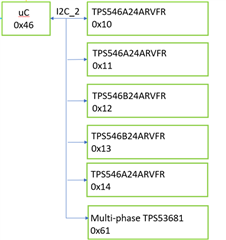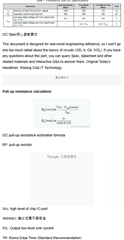Tool/software:
We have some VRs parts at the one I2C Bus(I2C_2) as shown below,in this open drain bus,we want add PU resistors and we want to konow how can we count the max and min of Rp(PU resistor) value?

Also we saw the some remmandation fomula in web,but we have confustion for IOL and Cb value,see my questions below.
1. we have 7 parts in this I2C bus,for IOL(each datasheet have difne this) count is add up to calculate or Individual calculation?
2. Also Cb is simular question as 1, Cb count is add up to calculate or Individual calculation?


